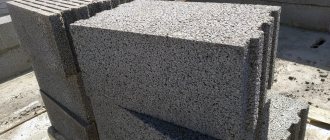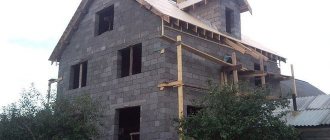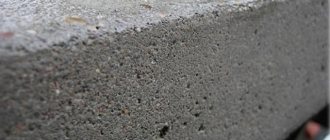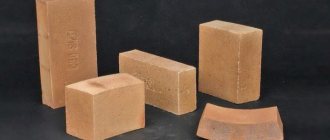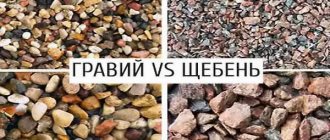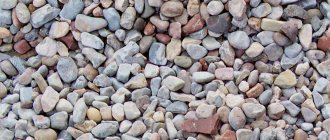Which plywood to choose for formwork
Various samples of plywood sheets are available for sale.
The material differs in composition and processing method. In addition, there are products from different manufacturers on the market. If you need to purchase moisture-resistant plywood for formwork, you need to pay attention to the following criteria:
Thickness. Since the cost of the material depends on the thickness of the plywood for formwork, there may be an understandable desire to save money. However, the savings must be reasonable. Using too thin plywood for formwork, it is difficult to achieve a good result. The panels of the structure will bend under the pressure of the concrete mixture and may even collapse. The optimal choice in this case is a material with a thickness of 10-12 mm, but if a thick layer of concrete is to be poured (for example, when building a foundation), you need to choose thicker and more durable sheets, the optimal thickness in this case is 18 mm.
- Grade. The material is available in different classes. The most expensive option is extra class. Cheaper ones are samples of class I-IV. The material is selected taking into account the conditions of use; most often, class I or II sheets are used. They have a fairly high strength index.
- Material. When choosing, you need to take into account not only the composition of the adhesive composition, but also the veneer material. The most commonly used material is birch or coniferous wood. These varieties are affordable. More expensive varieties are plywood made from teak, fir, and larch. However, under difficult operating conditions, it may be more profitable to purchase a more expensive and durable material that can withstand a large number of cycles of use.
An important indicator that is taken into account when purchasing is the size of the plywood sheets. The following options exist:
Standard. These are square sheets with side lengths of 1220 and 1525 mm, as well as a rectangular sheet with a length of 1525 mm and a width of 1220 mm. The advantage of this option is that the material has an affordable price.
- Large format. To create large panels, it is more convenient to use large-format sheets of plywood. They cost more than standard ones, but allow you to assemble panels that do not have joints.
- Non-standard. If necessary, you can order the production of sheets according to specified sizes. This is very convenient, but the material will cost significantly more.
An important selection criterion is the quality of surface treatment. The best option is sheets with a perfectly smooth and even texture. Application of smooth sheets with a glossy surface:
- facilitates dismantling work, since the smooth surface is easily separated from hardened concrete;
- monolithic surfaces are smooth, which facilitates their subsequent processing.
When choosing, it is worth considering where the product was produced. The most popular options are domestic and Chinese-made materials. Sheets produced in the DPRK have a lower cost.
This option is recommended to be used as an economical option when constructing small architectural forms or low-rise private construction. The formwork will withstand a limited number of cycles, so if the construction volume is small, then choosing a cheaper option is justified.
For large volumes of work, it is better to buy a domestic product; it is more expensive, but is more durable. To increase turnover, that is, the ability to withstand a greater number of cycles of use, special lubricants can be used.
They come in two types - barrier and chemically active. The first option creates an additional protective layer, the second increases the resistance of the shields to moisture, as it contains hydrophobic substances. You can use diesel fuel, used motor oil or wood paint as a lubricant.
So, plywood is a suitable material option for the manufacture of various types of formwork. In order for forms for pouring concrete to last a long time, it is necessary to choose the right base. When choosing, it is necessary to take into account a number of important indicators - the raw materials used, thickness, quality of surface treatment, sheet sizes. The right choice is a guarantee of high quality plywood formwork.
What sizes of plywood boards are there?
If you need guaranteed high-quality laminated plywood for formwork, you can buy it in Moscow with prompt delivery to the construction site from our company. But when ordering, we recommend that you pay more attention to the choice of sheet dimensions. There are the following sizes of laminated plywood for formwork of all types of thickness:
- Standard. The advantage of purchasing sheets will be their affordable cost. The classic size of plywood for formwork is 1220 mm × 1220 mm, 1525 mm × 1220 mm and 1525 mm × 1525 mm. Sometimes manufacturers also produce slabs of reduced dimensions. You can ask the manager about their availability in the warehouse. It is also worth noting that used plywood for formwork, which you can buy from us with delivery throughout Moscow and the region, retains its standard dimensions. Measurements are carried out for each slab separately. Rejected plywood for used formwork can be purchased at a reduced cost.
- Large format. The cost of building materials will be higher than that of standard sheets. Large-format formwork plywood has the following dimensions - 3000 mm × 1500 mm, 2500 mm × 1250 mm, 2440 mm × 1220 mm, 1830 mm × 1525 mm and 3050 mm × 1525 mm. In domestic conditions, it is inconvenient to use slabs of such dimensions, especially for organizing foundation formwork, therefore laminated plywood at a price of 1,760 to 6,300 rubles per sheet is purchased mainly in bulk by construction companies or furniture manufacturers.
- Non-standard. Sometimes it is required that moisture-resistant laminated plywood for formwork have strictly specified dimensions. In this case, the manufacturer produces building materials to order. In this case, the cost of plywood for formwork is calculated individually. If this option is not suitable, then large-format sheets are purchased and cut.
The design design (features of the future monolith) will help you calculate which size is more profitable to buy laminated plywood for formwork. We recommend purchasing materials size to size so that you do not have to pre-cut the sheets. This extends the work time and cost.
What is formwork for a strip foundation
According to the principle of use, formwork can be removable (collapsible) or permanent. As the name implies, the removable one is disassembled after the concrete gains strength above critical (about 50%). Therefore it can be used several times. Depending on the material, the same set can withstand from 3 to 8 pours; industrial options can be used several dozen, and some hundreds of times.
Removable formwork is dismantled after the concrete has gained 50% strength
Permanent formwork becomes an inseparable part of the foundation. Such systems began to be used relatively recently. They are made mainly from extruded polystyrene foam. Blocks of different configurations are produced, which are connected to each other using locks and metal pins. From the blocks, like from a construction set, the required shape is assembled.
Fixed formwork becomes part of the foundation - it also doubles as a heat insulator
Fixed polystyrene foam formwork not only gives shape, but also acts as thermal and hydro insulation and also has sound insulating properties. It costs a lot, but it immediately solves many problems, and the time spent on building the foundation is significantly reduced.
There is another type of permanent formwork - hollow concrete blocks. They also come in different configurations - wall, corner, radius, etc. They consist of two or three walls and several jumpers that hold the walls in a certain position. They are connected to each other using locks and reinforced with rods.
Tips for choosing
If you need to purchase plywood for formwork, then when choosing slabs, pay special attention to the following criteria
- Price. A very low price indicates poor quality of the product, therefore, it is recommended to buy products at bases and in large construction stores.
- Surface structure. The sheet must not have defects or destruction. If the materials were stored improperly, then it is likely that there will be distortions that are quite difficult to correct. It is taken into account that finishing plywood, as a rule, has a brown and black color.
- Marking. Designations make it possible to find out the key parameters of the material on site. The information is printed on the label or etched onto the material itself.
- Grade. The building material is manufactured in several grades - extra, I-IV. The higher grade the formwork material is, the more difficult it will be to purchase it, since the minimum price will be quite high. However, at the same time, grade I/II panels will have the highest strength properties and performance parameters. As a result, the building material for formwork is selected according to the conditions of use and loads.
- Availability of a certificate. The product is related to special ones; therefore, the manufacturer must be tested and receive the appropriate certificate. The presence of a document certifying the product’s compliance with established technical regulations or GOST is the main sign of the proper quality of the product; in addition, the document must be sealed with an original seal or a stamp of the organization certifying its authenticity; a photocopy will not work.
To learn how to choose the right plywood for formwork, see the following video.
Is there a price alternative?
If you are not interested in reusing building materials, then laminated plywood for used formwork is more suitable for you, which you can also buy in Moscow from our company. The cost of a sheet will vary from 560 to 1,200 rubles/sheet. This gap in the price of building materials is associated with the manufacturers of plywood for formwork and its characteristics (true for both new and used boards).
High-quality laminated plywood for formwork is a multi-layer board covered on both sides with a special polymer film. It is resistant to both moisture and mechanical damage. Therefore, this type of building material is considered the most durable among existing types of plywood (FK, FSF, etc.). Unused plywood laminated for 18 mm formwork, the price of which also depends on the grade of the material, can be used from 65 to 95-100 times. When using sheets under harsh conditions, turnover is reduced to 56-70 times. In our catalog we present laminated used plywood for formwork with a working life of 45-55 revolutions. The shorter the resource (tested by tests), the lower the price of the building material. For laying a strip foundation, this slab resource is quite sufficient.
What plywood to use for formwork. Plywood for formwork
Craftsmen know that during the pouring of mortar, the raw materials from which the formwork is made are subjected to various mechanical processes, for example, the action of abrasive particles that make up the concrete. In addition, it is affected by chemical factors, because the concrete mixture is highly aggressive. Often the mold comes into contact with moisture. For these reasons, the correct choice of material from which it will be built is of great importance. The right choice will save you from deformation of the material used, and as a result, from high consumption of mortar.
Before purchasing formwork plywood, you should think about the following questions:
- what type of concrete mix will be used? The most important is the alkali content of the concrete, because high pH destroys plywood
- What quality of concrete plane is required?
- What kind of formwork do you need to make?
- How strong should plywood be?
- how many times do you want to use the plywood?
- Do you know the potential costs of each concrete pour?
Different types of plywood can be used to create formwork. It all depends on the building being constructed. For 20 years, specialists have been developing special types of plywood for specific purposes. Depending on the type of formwork, the number of cycles for using the same plywood sheet ranges from 1 to 200. The highest number of cycles can be achieved by using specialized grades of plywood and providing the necessary maintenance. Birch plywood FC can be called the most budget-friendly variety. It is intended for one-time work. It has a low water resistance threshold and small sheet size. You can use it several times if you treat the sheet with industrial oil before starting work. In addition, unsanded sheets have different thicknesses, so problems may arise with their joining.
FSF birch plywood is characterized by higher water resistance compared to FK sheets. It is characterized by low turnover, which can also be increased by applying industrial oil. As with the previous type, there may be problems with thickness and joints.
Coniferous plywood, produced from pine or spruce raw materials, is almost always glued together with phenolic compounds and belongs to the category of increased water resistance (FSF). This grade is recommended for use in forms where high quality of the plane is not required, and the turnover does not exceed five times.
Plywood certification
The consumer is protected from low-quality products by the current certification system for any product in Russia. But to confirm the quality of most brands of plywood, it is enough to obtain only a declaration of conformity.
Among the mandatory documents that accompany each shipment there must be a Fire Safety Certificate. It is issued by the Ministry of Emergency Situations after testing plywood samples.
Laminated plywood, which is manufactured in accordance with technical specifications, has a fairly wide range of uses. It is widely used in furniture production, shipbuilding and aircraft construction, in the factory creation of cars and their further arrangement, even in an ordinary garage.
With its help, it is even possible to carry out some roofing work and make high-quality packaging or containers. In this case, laminated plywood can also be used as a leveling base under the laminate. Experts highly appreciate its qualities and highlight the main ones. Strength, durability, ease of use.
Making formwork from plywood
Before installing the formwork, careful marking is carried out on the construction site. For example, when pouring a foundation, a trench is dug, the walls of which will help to correctly install the shields. But for walls with complex configurations or vaulted structures, several stages of formwork installation and subsequent mortar pouring will most likely be required.
The formwork limits the solution from the inside and outside. In order to comply with the required width dimensions, the following technology is used:
- holes are drilled in sheets of plywood for a threaded rod or screw rod;
- the ends of the pin (rod) should protrude beyond the outer side of the formwork, where adjusting nuts are attached to them;
- cut plastic tubes with a diameter exceeding the diameter of the hairpin and a length according to the distance between the sheets;
- The tube is placed on the drilled holes, a pin is passed inside and nuts are attached to its ends.
The overall rigidity of the formwork on each side is ensured by fasteners, supports and slats. The slats are nailed or secured with self-tapping screws
It is very important to ensure tightness on each side to prevent leakage of the solution. All cracks are caulked or filled with foam
After the solution has hardened, unscrew the nuts, remove the studs and dismantle the panels. The tubes remain walled up, although if necessary they can be knocked out or cut out. Holes in the concrete are partially sealed, partially left for wiring cables, pipes, ventilation devices, etc.
Video: installation of plywood formwork
https://youtube.com/watch?v=wvKzE3LxMfc
It’s even easier to purchase or rent laminated panels with fastening elements. They are specially produced for the installation of formwork and are structurally designed in such a way that there are no through gaps at the joining points.
The advent of laminated plywood gave impetus to monolithic construction
The formwork uses plywood with a thickness of 18–21 mm. Catalogs and prices for these products can be found on the websites of manufacturers and suppliers.
Table: average prices for plywood for formwork
| Laminated plywood | |||
| Manufacturer | Size, mm | Thickness, mm | Price, rub |
| China | 1220 x 2440 | 21 | 1850 |
| 1220 x 2440 | 18 | 1550 | |
| Russia | 1500 x 3000 | 21 | 3700 |
| 1500 x 3000 | 18 | 3300 | |
| 1220 x 2440 | 21 | 2400 | |
| 1220 x 2440 | 18 | 2200 | |
| FSF non-laminated plywood | |||
| Russia | 1500 x 3000 | 21 | 2200 |
| 1220 x 2440 | 18 | 1400 |
Calculation of costs for formwork and plywood turnover is carried out according to methods developed by the Ministry of Construction of the Russian Federation. In design and construction organizations, this is done by qualified estimators. You can make your own estimate using an online calculator. Such services are provided free of charge by manufacturers and suppliers on their websites.
Turnover of laminated plywood
The turnover rate of formwork is understood as the number of cycles of its installation, concrete pouring and dismantling without loss of operational properties. As a rule, this figure is several tens of times.
Table: turnover of laminated plywood
| Plywood | Class | ||
| Small shield | I | II | III |
| Turnover | |||
| for floors | >20 | >10 | to 10 |
| for walls | >60 | >30 | up to 30 |
| Large-shield | I | II | III |
| for walls | >80 | >60 | up to 60 |
Types of removable formwork
In construction, several different types of formwork are used for monolithic construction. The choice of option is carried out taking into account the design of the structure being built.
Large-shield
The use of large-panel formwork is advisable when constructing large objects. The set consists of large-area panels that are structurally connected to supporting elements.
For ease of use, the shields are equipped with special scaffolds for moving workers, and a system of jacks is used to level the height.
The use of this equipment allows you to quickly assemble formwork forms of the required configuration. The disadvantage is the difficulty of ensuring casting quality in the corners of the molds. In addition, assembly requires the use of lifting equipment.
Small shield
Sets of small panel formwork are used for the construction of a wide variety of structures, including small architectural forms. This option is suitable for casting vertical, inclined and horizontal shapes of various shapes.
Consists of panels weighing less than 50 kg, as well as supporting and fastening elements. If necessary, the panels can be joined, enlarging the structure vertically.
An important advantage of this option is maximum technological flexibility, the ability to assemble manually or using light cranes. Disadvantages include the high labor intensity of assembly, as well as the need to use additional measures to ensure high quality surfaces of cast walls.
Lifting and adjustable
These are collapsible structures, specially designed for the construction of vertical structures with a height of more than 40 meters with a constant and variable cross-section. The package includes external and internal working floor panels, jacks mounted on frames, and drive stations.
As the concrete solution hardens, the formwork is raised higher by jacks. The advantages of the equipment are high construction speed and maximum technological flexibility.
The disadvantages include the increased complexity of constructing floors, as well as the high technical complexity of the equipment. Due to the latter circumstance, highly qualified workers are allowed to work with this type of formwork.
Volume-adjustable
Volumetric adjustable formwork consists of blocks, which, after assembly, form formwork in the shape of the letter “P”. Used for simultaneous concreting of walls and floors of premises. This provides additional strength to buildings. The disadvantages include:
- relatively little technological flexibility;
- The equipment is difficult to install, so it is necessary to use highly qualified labor.
sliding
Sliding formwork is mainly used for the construction of tall monolithic structures of small diameter, for example, chimneys. The principle of operation is the ability to move formwork forms vertically upward without interrupting the concreting process. This equipment allows you to do without dismantling the structure and installing it in a new location. The shields simply move up.
The disadvantage of the equipment is its high cost compared to collapsible formwork kits. However, in some cases, using this option is cost-effective. Another important circumstance is the need for continuity of the pouring process, which is why the work has to be carried out in three shifts.
Plywood for concreting. What kind of plywood, other than laminated plywood, can be used for formwork?
To pour a foundation or erect a monolithic floor, we can also recommend purchasing the following types of plywood for formwork:
FC. In the production of building materials, urea glue is used. It contains a fairly large amount of formaldehyde resins. Therefore, FC plywood for formwork is not suitable for fixed systems, but excellent for detachable structures. These boards are moisture resistant. The moisture resistance coefficient is lower than that of laminated plywood for 18 mm formwork, but with careful use the turnover of the slabs will be high up to 20-25 times. For this type of plywood for formwork, the price will range from 750 to 1,950 rubles per sheet (the price is indicated for a slab with a thickness of 18 mm).
- FSF. When making multilayer waterproof plywood for formwork, a phenol-formaldehyde adhesive composition is used. It gives the material the best characteristics - strength and maximum resistance to moisture. At the same time, FSF plywood for formwork has improved wear resistance properties. Its turnover reaches 35-43 times. But due to the adhesive composition used (it releases phenol under the influence of temperature and moisture), it is recommended to use it only for outdoor work. Durable plywood for formwork has a price per sheet ranging from 1,400 to 2,800 rubles.
- FBK. The layers of the slab are bonded with a bakelite varnish composition. It is resistant to moisture, not afraid of temperature changes and resistant to atmospheric and climatic loads. Simply put, this moisture-resistant plywood for formwork, the price of which will vary from 1,700 to 3,500 rubles per sheet, can be used in any operating conditions. Finnish plywood for FB formwork has similar characteristics of wear resistance and mechanical strength. It is also chosen for working in conditions of high humidity.
- FBS. The most commonly used material. During its production, veneer (raw materials) is treated with special compounds containing alcohol and bakelite glue. As a result, formwork sheets acquire an additional quality - resistance to microorganisms. FBS board has a high density, which means it can withstand high vertical and horizontal loads. Therefore, when using this type of plywood for formwork, the thickness of the sheet can be chosen smaller - 8-15 mm (depending on the characteristics of the foundation and floor). The presence of glue in the layers gives moisture-resistant plywood for formwork increased flexibility characteristics. Therefore, the building material also has excellent bending strength. Our catalog includes an assortment of FBS plywood for used formwork, the price per sheet of which will be 2,500-3,800 rubles. The cost of unused material will vary from 5,600 to 10,450 rubles/sheet.
Advantages
Manufacturers of plywood materials produce moisture-resistant plywood for formwork in order to ultimately obtain an excellent foundation. This material is much better than wooden boards due to the following advantages:
- Very durable material, and does not deform even with repeated use;
- Plywood construction is lighter in weight than wood;
- To construct forms, you can reuse used sheets;
- The presence of bending resistance and moisture resistance in all types of plywood material;
- Large sheets are convenient for obtaining different designs.
Large panel formwork
Formwork materials
Today, many different materials are used to construct formwork forms. Let's figure out which types of formwork are appropriate to use in private construction, and which are suitable only for professionals.
Tree
Formwork made from wooden panels can be assembled manually, since the panels should not weigh more than 70 kg. The main elements of the formwork are made from boards 25 mm thick, however, if the design load is large, then thicker boards can be used.
The optimal width of the boards is 150 mm. If you use wider boards, the risk of warping of the boards increases. Shields are knocked together using wooden blocks or boards.
To make forms, you cannot use well-dried wood, as it will actively absorb liquid from the poured concrete solution. The optimal level of wood moisture is 25%. When assembling the panels, you need to ensure their tightness. Large gaps between the boards are filled with slats, small ones are sealed with tow.
Plywood
A more convenient material option for assembling formwork is plywood. This option is used for assembling horizontal and vertical structures. An important advantage is that the concrete surface of the cast structure is perfectly smooth.
Types of plywood used for formwork assembly:
FBA. An environmentally friendly type of material; albumin-casein glue is used to glue the layers. This option is only suitable for one-time use as a material for formwork panels.
- FSF. The material contains phenolformadyl resin, which makes the plywood moisture resistant. Formwork panels made of this material can withstand several cycles of use.
- Laminated. The presence of a laminating layer increases the moisture resistance and smoothness of plywood. This option is ideal for assembling formwork panels.
Bakelized. Bakelite resin is used to glue the layers together. This gives the material high resistance to aggressive environments and strength. The material is well suited for formwork assembly, but is rarely used due to its high price.
Metal shields
Formwork with metal panels is an excellent option if you need to perform a large volume of monolithic work. It is characterized by high cost, so it is rarely used in private construction.
The material ideally holds the given geometric shape, has minimal adhesion to concrete mortar, and has high turnover rates. Shields made of steel are especially reliable, but they have an impressive weight.
Aluminum panels are lighter, but they are less resistant to deformation and are difficult to repair. Therefore, steel metal shields are the most practical.
Plastic
Relatively recently, they began to use formwork kits with plastic panels. This equipment has many advantages over other options. Firstly, the shields are relatively lightweight and easy to install. Secondly, the material is resistant to wear and stress.
Thirdly, concrete mortar does not stick to plastic panels, so lubricant should be used in minimal quantities. Universal kits are produced from plastic, from which you can easily assemble forms of any configuration.
